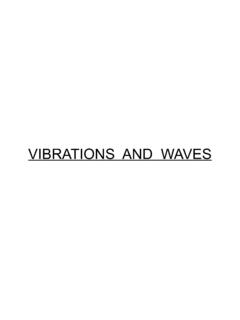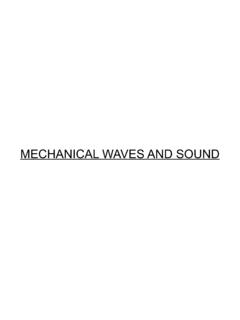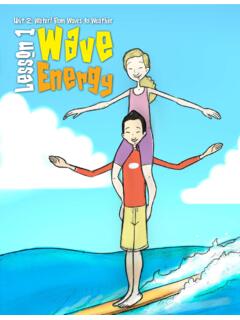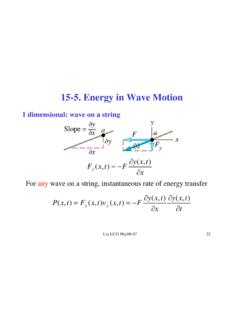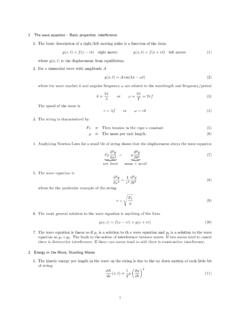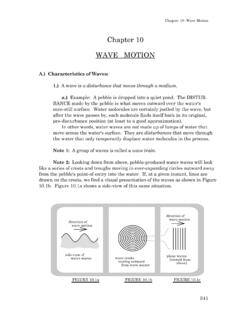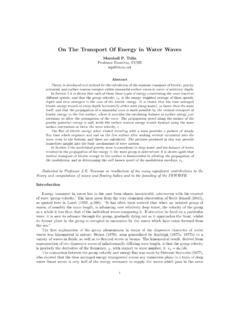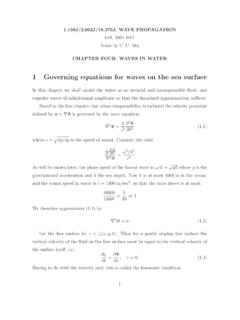Transcription of Introduction to Energy - Multiverse
1 8 Secondary Energy InfobookWhat is Energy ? Energy does things for us. It moves cars along the road and boats on the water. It bakes a cake in the oven and keeps ice frozen in the freezer. It plays our favorite songs and lights our homes at night so that we can read good books. Energy helps our bodies grow and our minds think. Energy is a changing, doing, moving, working thing. Energy is defined as the ability to produce change or do work, and that work can be divided into several main tasks we easily recognize: Energy produces light. Energy produces heat. Energy produces motion . Energy produces sound. Energy produces growth. Energy powers of Energy There are many forms of Energy , but they all fall into two categories potential or kinetic.
2 POTENTIAL Energy Potential Energy is stored Energy and the Energy of position, or gravitational Energy . There are several forms of potential Energy , including: Chemical Energy is Energy stored in the bonds of atoms and molecules. It is the Energy that holds these particles together. Biomass, petroleum, natural gas, and propane are examples of stored chemical photosynthesis, sunlight gives plants the Energy they need to build complex chemical compounds. When these compounds are later broken down, the stored chemical Energy is released as heat, light, motion , and sound. Stored Mechanical Energy is Energy stored in objects by the application of a force. Compressed springs and stretched rubber bands are examples of stored mechanical Energy .
3 Nuclear Energy is Energy stored in the nucleus of an atom the Energy that holds the nucleus together. The Energy can be released when the nuclei are combined or split apart. Nuclear power plants split the nuclei of uranium atoms in a process called fission. The sun combines the nuclei of hydrogen atoms into helium atoms in a process called fusion. In both fission and fusion, mass is converted into Energy , according to Einstein s Theory, E = mc2. Gravitational Energy is the Energy of position or place. A rock resting at the top of a hill contains gravitational potential Energy . Hydropower, such as water in a reservoir behind a dam, is an example of gravitational potential Energy .
4 KINETIC Energy Kinetic Energy is motion the motion of waves, electrons, atoms, molecules, substances, and objects. Electrical Energy is the movement of electrons. Everything is made of tiny particles called atoms. Atoms are made of even smaller particles called electrons, protons, and neutrons. Applying a force can make some of the electrons move. Electrons moving through a wire are called electricity. Lightning is another example of electrical Energy . Radiant Energy is electromagnetic Energy that travels in transverse waves. Radiant Energy includes visible light, x-rays, gamma rays, and radio waves. Light is one type of radiant Energy . Solar Energy is an example of radiant Energy .
5 Thermal Energy , or heat, is the internal Energy in substances the vibration and movement of atoms and molecules within substances. The faster molecules and atoms vibrate and move within substances, the more Energy they possess and the hotter they become. Geothermal Energy is an example of thermal Energy . motion Energy is the movement of objects and substances from one place to another. According to Newton s Laws of motion , objects and substances move when a force is applied. Wind is an example of motion Energy . Sound Energy is the movement of Energy through substances in longitudinal (compression/rarefaction) waves. Sound is produced when a force causes an object or substance to vibrate.
6 The Energy is transferred through the substance in a wave. Introduction to Energy 2008* 2009 World Population 6,682,639,000 6,776,917,000 Population 304,060,000 307,007,000 World Energy Production Q n/a Energy Production Q Q Renewables Q Q Nonrenewables Q Q World Energy Consumption Q n/a Energy Consumption Q Q Renewables Q Q Nonrenewables Q QQ = Quad (1016 Btu) see Measuring Energy on page 10.*The latest year for which final data for World and is available from : 2009 data for World Energy Production and World Energy Consumption is not available at time of at a Glance, 2009 2011 The NEED Project Box 10101, Manassas, VA 20108 9 Conservation of EnergyYour parents may tell you to conserve Energy .
7 Turn out the lights, they say. But to scientists, conservation of Energy means something quite different. The law of conservation of Energy says Energy is neither created nor destroyed. When we use Energy , we do not use it up we just change its form. That s really what we mean when we say we are using Energy . We change one form of Energy into another. A car engine burns gasoline, converting the chemical Energy in the gasoline into mechanical Energy that makes the car move. Old-fashioned windmills changed the kinetic Energy of the wind into mechanical Energy to grind grain. Solar cells change radiant Energy into electrical Energy . Energy can change form, but the total quantity of Energy in the universe remains the same.
8 The only exception to this law is when a small amount of matter is converted into Energy during nuclear fusion and is how much useful Energy you can get out of a system. In theory, a 100 percent Energy efficient machine would change all of the Energy put in it into useful work. Converting one form of Energy into another form always involves a loss of usable Energy , usually in the form of heat. In fact, most Energy transformations are not very efficient. The human body is no exception. Your body is like a machine, and the fuel for your machine is food. Food gives us the Energy to move, breathe, and think. But your body isn t very efficient at converting food into useful work.
9 Your body s overall efficiency is about 15 percent. The rest of the Energy is used as heat. An incandescent light bulb isn t efficient either. A light bulb converts ten percent of the electrical Energy into light and the rest (90 percent) is converted into thermal Energy (heat). That s why a light bulb is so hot to the touch. Most electric power plants are about 35 percent efficient. It takes three units of fuel to make one unit of electricity. Most of the other Energy is lost as waste heat. The heat dissipates into the environment where we can no longer use it as a practical source of Energy . Forms of EnergyPOTENTIALS tored Energy and the Energy of position (gravitational).
10 CHEMICAL Energy is the Energy stored in the bonds of atoms and molecules. Biomass, petroleum, natural gas, propane and coal are MECHANICAL Energy is Energy stored in objects by the application of force. Compressed springs and stretched rubber bands are examples. NUCLEAR Energy is the Energy stored in the nucleus of an atom the Energy that holds the nucleus together. The nucleus of a uranium atom is an Energy is the Energy of place or position. Water in a reservoir behind a hydropower dam is an : the motion of waves, electrons, atoms, molecules and Energy is the movement of electrons. Lightning and electricity are examples. RADIANT Energy is electromagnetic Energy that travels in transverse waves.


